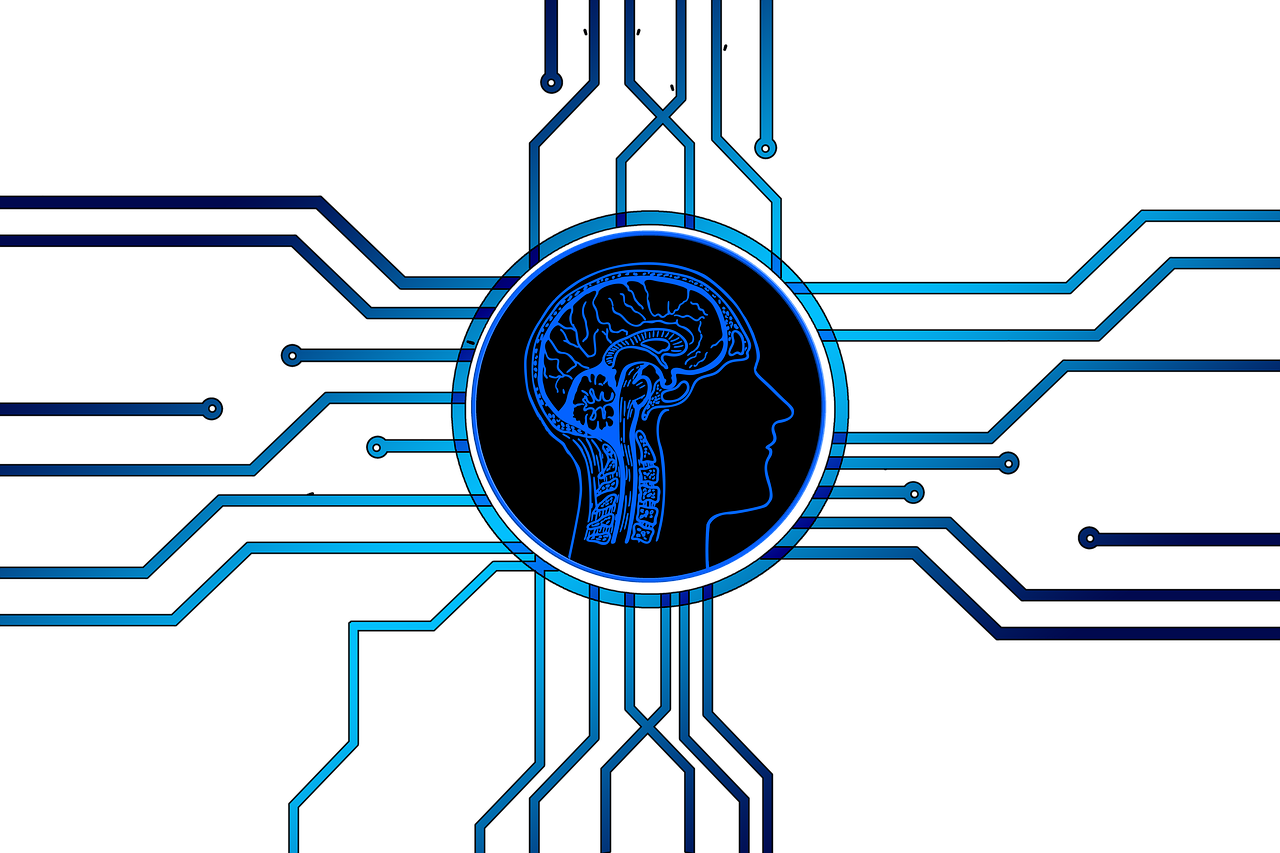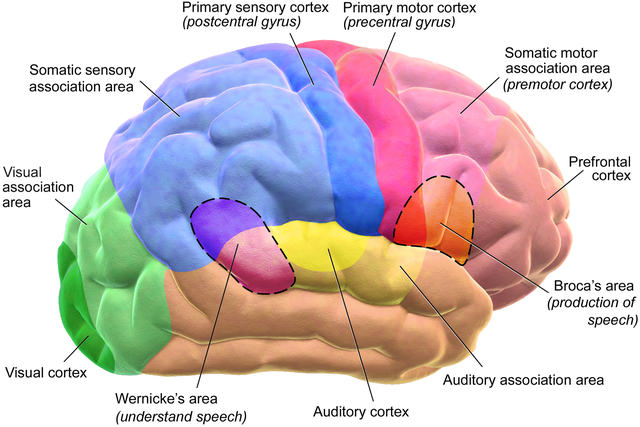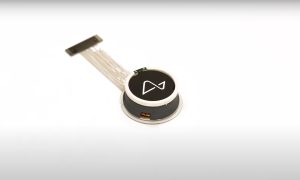

News
Scientists use AI neural network to translate speech from brain activity
Three recently published studies focused on using artificial intelligence (AI) neural networks to generate audio output from brain signals have shown promising results, namely by producing identifiable sounds up to 80% of the time. Participants in the studies first had their brain signals measured while they were either reading aloud or listening to specific words. All the data was then given to a neural network to “learn” how to interpret brain signals after which the final sounds were reconstructed for listeners to identify. These results represent hopeful prospects for the field of brain-computer interfaces (BCIs), where thought-based communication is quickly moving from the realm of science fiction to reality.
The idea of connecting human brains to computers is far from new. In fact, several relevant milestones have been made in recent years including enabling paralyzed individuals to operate tablet computers with their brain waves. Elon Musk has also famously brought attention to the field with Neuralink, his BCI company that essentially hopes to merge human consciousness with the power of the Internet. As brain-computer interface technology expands and develops new ways to foster communication between brains and machines, studies like these, originally highlighted by Science Magazine, will continue demonstrating the steady march of progress.

In the first study conducted by researchers from Columbia University and Hofstra Northwell School of Medicine, both in New York, five epileptic participants had the brain signals from their auditory cortexes recorded as they listened to stories and numbers being read to them. The signal data was provided to a neural network for analysis which then reconstructed audio files that were accurately identified by participating listeners 75% of the time.
In the second study conducted by a team from the University of Bremen (Germany), Maastricht University (Netherlands), Northwestern University (Illinois), and Virginia Commonwealth University (Virginia), brain signal data was gathered from six patients’ speech planning and motor areas while undergoing tumor surgeries. Each patient read specific words aloud to target the data collected. After the brain data and audio data were given to their neural network for training, the program was given brain signals not included in the training set to recreate audio, the result producing words that were recognizable 40% of the time.
Finally, in a third study by a team at the University of California, San Francisco, three participants with epilepsy read text aloud while brain activity was captured from the speech and motor areas of their brains. The audio generated from their neural network’s analysis of the signal readings was presented to a group of 166 people who were asked to identify the sentences from a multiple choice test – some sentences were identified with 80% accuracy.
While the research presented in these studies shows serious progress towards connecting human brains to computers, there are still a few significant hurdles. For one, the way neuron signal patterns in the brain translate into sounds varies from person to person, so neural networks must be trained on each individual person. The best results require the best data possible, i.e., the most precise neuron signals possible, meaning this is something that can only be obtained by placing electrodes in the brain itself. The opportunities to collect data at this invasive level for research are limited, relying on voluntary participation and approval of experiments.
All three of the studies highlighted demonstrated an ability to reconstruct speech based on neural data in some significant capacity; however, also in all cases, the study participants were able to create audible sounds to use with the computer training set. In the case of patients unable to speak, the level of difficultly in interpreting the brain’s speech signals from other signals will be the biggest challenge. Also, the differences between brain signals during actual speech vs. thinking about speech will complicate matters further.
News
Tesla begins Robotaxi certification push in Arizona: report
Tesla seems serious about expanding its Robotaxi service to several states in the coming months.

Tesla has initiated discussions with Arizona transportation regulators to certify its driverless Robotaxi service in the state, as per a recent report from Bloomberg News. The move follows Tesla’s launch of its Robotaxi pilot program in Austin, Texas, as well as CEO Elon Musk’s recent comments about the service’s expansion in the Bay Area.
The Arizona Department of Transportation confirmed to Bloomberg that Tesla has reached out to begin the certification process for autonomous ride-sharing operations in the state. While details remain limited, the outreach suggests that Tesla is serious about expanding its driverless Robotaxi service to several territories in the coming months.
The Arizona development comes as Tesla prepares to expand its service area in Austin this weekend, as per CEO Elon Musk in a post on X. Musk also stated that Tesla is targeting the San Francisco Bay Area as its next major market, with a potential launch “in a month or two,” pending regulatory approvals.
Tesla first launched its autonomous ride-hailing program on June 22 in Austin with a small fleet of Model Y vehicles, accompanied by a Tesla employee in the passenger seat to monitor safety. While still classified as a test, Musk has said the program will expand to about 1,000 vehicles in the coming months. Tesla will later upgrade its Robotaxi fleet with the Cyercab, a two-seater that is designed without a steering wheel.
Sightings of Cybercab castings around the Giga Texas complex suggests that Tesla may be ramping the initial trial production of the self-driving two-seater. Tesla, for its part, has noted in the past that volume production of the Cybercab is expected to start sometime next year.
In California, Tesla has already applied for a transportation charter-party carrier permit from the state’s Public Utilities Commission. The company is reportedly taking a phased approach to operating in California, with the Robotaxi service starting with pre-arranged rides for employees in vehicles with safety drivers.
News
Tesla sets November 6 date for 2025 Annual Shareholder Meeting
The automaker announced the date on Thursday in a Form 8-K.

Tesla has scheduled its 2025 annual shareholder meeting for November 6, addressing investor concerns that the company was nearing a legal deadline to hold the event.
The automaker announced the date on Thursday in a Form 8-K submitted to the United States Securities and Exchange Commission (SEC). The company also listed a new proposal submission deadline of July 31 for items to be included in the proxy statement.
Tesla’s announcement followed calls from a group of 27 shareholders, including the leaders of large public pension funds, which urged Tesla’s board to formally set the meeting date, as noted in a report from The Wall Street Journal.
The group noted that under Texas law, where Tesla is now incorporated, companies must hold annual meetings within 13 months of the last one if requested by shareholders. Tesla’s previous annual shareholder meeting was held on June 13, 2024, which placed the July 13 deadline in focus.
Tesla originally stated in its 2024 annual report that it would file its proxy statement by the end of April. However, an amended filing on April 30 indicated that the Board of Directors had not yet finalized a meeting date, at least at the time.
The April filing also confirmed that Tesla’s board had formed a special committee to evaluate certain matters related to CEO Elon Musk’s compensation plan. Musk’s CEO performance award remains at the center of a lengthy legal dispute in Delaware, Tesla’s former state of incorporation.
Due to the aftermath of Musk’s legal dispute about his compensation plan in Delaware, he has not been paid for his work at Tesla for several years. Musk, for his part, has noted that he is more concerned about his voting stake in Tesla than his actual salary.
At last year’s annual meeting, TSLA shareholders voted to reapprove Elon Musk’s compensation plan and ratified Tesla’s decision to relocate its legal domicile from Delaware to Texas.
Elon Musk
Grok coming to Tesla vehicles next week “at the latest:” Elon Musk
Grok’s rollout to Tesla vehicles is expected to begin next week at the latest.

Elon Musk announced on Thursday that Grok, the large language model developed by his startup xAI, will soon be available in Tesla vehicles. Grok’s rollout to Tesla vehicles is expected to begin next week at the latest, further deepening the ties between the two Elon Musk-led companies.
Tesla–xAI synergy
Musk confirmed the news on X shortly after livestreaming the release of Grok 4, xAI’s latest large language model. “Grok is coming to Tesla vehicles very soon. Next week at the latest,” Musk wrote in a post on social media platform X.
During the livestream, Musk and several members of the xAI team highlighted several upgrades to Grok 4’s voice capabilities and performance metrics, positioning the LLM as competitive with top-tier models from OpenAI and Google.
The in-vehicle integration of Grok marks a new chapter in Tesla’s AI development. While Tesla has long relied on in-house systems for autonomous driving and energy optimization, Grok’s integration would introduce conversational AI directly into its vehicles’ user experience. This integration could potentially improve customer interaction inside Tesla vehicles.
xAI and Tesla’s collaborative footprint
Grok’s upcoming rollout to Tesla vehicles adds to a growing business relationship between Tesla and xAI. Earlier this year, Tesla disclosed that it generated $198.3 million in revenue from commercial, consulting, and support agreements with xAI, as noted in a report from Bloomberg News. A large portion of that amount, however, came from the sale of Megapack energy storage systems to the artificial intelligence startup.
In July 2023, Musk polled X users about whether Tesla should invest $5 billion in xAI. While no formal investment has been made so far, 68% of poll participants voted yes, and Musk has since stated that the idea would be discussed with Tesla’s board.
-

 Elon Musk2 weeks ago
Elon Musk2 weeks agoTesla investors will be shocked by Jim Cramer’s latest assessment
-

 Elon Musk1 day ago
Elon Musk1 day agoxAI launches Grok 4 with new $300/month SuperGrok Heavy subscription
-

 Elon Musk3 days ago
Elon Musk3 days agoElon Musk confirms Grok 4 launch on July 9 with livestream event
-

 News1 week ago
News1 week agoTesla Model 3 ranks as the safest new car in Europe for 2025, per Euro NCAP tests
-

 Elon Musk2 weeks ago
Elon Musk2 weeks agoA Tesla just delivered itself to a customer autonomously, Elon Musk confirms
-

 Elon Musk1 week ago
Elon Musk1 week agoxAI’s Memphis data center receives air permit despite community criticism
-

 Elon Musk2 weeks ago
Elon Musk2 weeks agoTesla’s Omead Afshar, known as Elon Musk’s right-hand man, leaves company: reports
-

 News2 weeks ago
News2 weeks agoXiaomi CEO congratulates Tesla on first FSD delivery: “We have to continue learning!”

















